Imagine a dog breed that combines the intelligence, loyalty, and protective instincts of a German Shepherd with the friendly, outgoing nature and trainability of a Labrador Retriever. This remarkable blend is the Sheprador, a hybrid breed that brings together the best of both worlds.
With their adaptable temperament, impressive versatility, and loving demeanor, Shepradors are quickly becoming a favorite among dog enthusiasts. Whether you are looking for a reliable family companion, an energetic exercise partner, or a dedicated working dog, the Sheprador might be the perfect addition to your household.
In this guide, we will explore the fascinating world of Shepradors, delving into their origins, characteristics, and why they are an excellent choice for many dog lovers. These dogs are not only exceptional family pets but also excel in various roles such as search and rescue, law enforcement, and service work, thanks to their unique combination of traits.
Key Takeaways:
-
Versatile Companion: Shepradors are ideal for families, singles, and active individuals.
-
Loyal and Protective: Known for their loyalty and protective nature, making them excellent watchdogs.
-
Highly Trainable: Their intelligence and eagerness to please make them easy to train for various roles, including service and working tasks.
-
Robust Health: With proper care, they can lead a healthy and active life, though they are prone to some common health issues.
-
Active Lifestyle: They require regular physical and mental exercise to stay happy and well-behaved
Read More: The History of Dog Breeding and the Rise of Designer Dogs
1. History and Origin

The Sheprador is a relatively new designer breed, resulting from the intentional crossing of the German Shepherd Dog and the Labrador Retriever. To fully appreciate the Sheprador, it’s essential to understand the rich histories and unique characteristics of its parent breeds.
German Shepherd
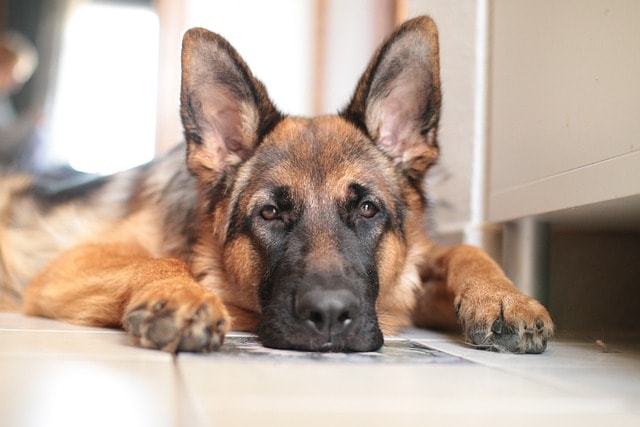
The German Shepherd was developed in Germany in the late 19th century by Captain Max von Stephanitz, who aimed to create the perfect working dog. German Shepherd dogs were initially bred for herding and guarding sheep. Over time, their intelligence, strength, and versatility made them ideal for various roles, including police and military work, search and rescue, and service dogs for people with disabilities. German Shepherds are known for their loyalty, courage, and protective nature, which have made them one of the most popular breeds worldwide.
Labrador Retriever
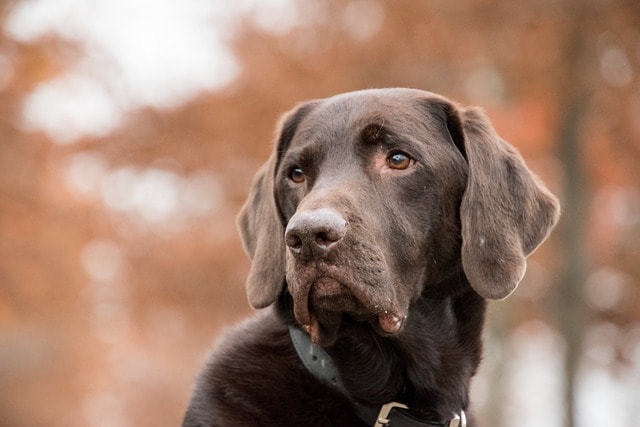
The Labrador Retriever originated in Newfoundland, Canada, and was initially known as the St. John’s dog. Fishermen used these dogs to help retrieve fishing nets and catch fish that escaped from fishing lines. In the early 19th century, Labradors were brought to England, where they were refined and standardized. Labradors quickly gained popularity as hunting dogs due to their excellent retrieving skills and friendly, outgoing nature. Today, they are one of the most popular family pets and are known for their intelligence, trainability, and affectionate disposition.
The intentional breeding of German Shepherds and Labrador Retrievers began in the late 20th and early 21st centuries. Breeders sought to combine the best traits of both breeds to create a dog that was intelligent, trainable, loyal, and versatile. The resulting Sheprador has inherited the German Shepherd’s protective instincts and the Labrador’s friendly, outgoing nature, making it a well-rounded and highly desirable breed.
Understanding Mixed Breed Dogs: German Shepherd Lab Mix

Understanding a mixed breed dog like the Sheprador requires a look at their breeding generations, the variability of traits they can inherit, and their path to recognition as
Generations of Breeding
Mixed breed dogs are typically classified by their generation, which can affect the predictability of their traits:
F1 Generation: The first generation is the result of crossing a purebred German Shepherd with a purebred Labrador Retriever. F1 Shepradors are 50% German Shepherd and 50% Labrador, inheriting traits directly from their parent breeds.
F2 Generation: This generation results from breeding two F1 Shepradors. F2 puppies can exhibit more varied traits, with some leaning more towards German Shepherd characteristics and others more towards Labrador characteristics.
F3 Generation and Beyond: These are bred from F2 Shepradors or a mix of further mixed generations. With each subsequent generation, the predictability of traits can diminish unless selective breeding practices are implemented to stabilize certain desired characteristics.
Path to Standard
Developing a new breed like the Sheprador and achieving an agreed-upon breed standard can take many generations of careful breeding. This process involves selecting parent dogs that exhibit the desired traits, such as temperament, physical appearance, and health. Each successive generation is evaluated, and only the best representatives are chosen for further breeding.
This meticulous selection process, which can span decades, aims to produce a breed that consistently shows the desired characteristics. Achieving a stable and predictable breed standard ensures uniformity in appearance and behavior, ultimately leading to recognition by major kennel clubs and breed organizations
Trait Variability in Mixed Breed Dogs
Trait variability is significant in mixed breeds like the German Shepherd Lab mix. They can inherit a wide range of physical and behavioral traits from their parent breeds. This includes physical characteristics such as coat color, length, and texture, which can range from the short, dense coat of a Labrador to the longer, double coat of a German Shepherd.
Behavioral traits can also vary, with some Shepradors exhibiting the high energy and playful nature of Labradors, while others may display the alertness and protective instincts of German Shepherds. This genetic diversity can make each Sheprador unique but also presents challenges in maintaining consistency within
Path to Recognition: International Designer Canine Registry
The path to recognition for mixed breeds like the Sheprador involves both informal and formal pathways. Informally, recognition comes from widespread popularity and acceptance among the general public and breeders who appreciate the mixed breed’s qualities. Formally, recognition might involve registering with hybrid dog registry or designer dog registries, which track the breed’s traits and lineage to ensure consistency and health standards are maintained. Full recognition by major kennel clubs like the American Kennel Club (AKC) is rare for mixed breeds and involves a rigorous process that may require the establishment of a breed club, a detailed breed standard, and a considerable population size.
Read More: Everything You Need to Know About Mixed Breed Dogs
3. Physical Characteristics

The Sheprador inherits a combination of physical traits from its German Shepherd and Labrador Retriever parents, resulting in a robust and appealing appearance. Typically, Shepradors are medium to large-sized dogs, inheriting traits from their German Shepherd parent and Labrador Retriever parent, weighing between 50 and 90 pounds and standing about 20 to 27 inches tall at the shoulder
Appearance
The physical appearance of a Sheprador can vary significantly due to the genetic influence of both parent breeds. Here are some common characteristics:
-
Coat: The coat of a Sheprador can range from short and dense, similar to a Labrador, to medium-length and double-layered like a German Shepherd. Common coat colors include black, tan, brown, and combinations thereof, often with unique markings inherited from the German Shepherd.
-
Build: Shepradors have a sturdy and muscular build, reflecting the athleticism of both parent breeds. They have a strong back, broad chest, and powerful legs, which make them agile and capable of various physical activities.
-
Head and Face: The head of a Sheprador is typically broad and well-proportioned, with a strong jaw and expressive eyes. Their ears can either be erect like a German Shepherd’s or floppy like a Labrador’s, and they often have a friendly and alert expression.
-
Eyes: Shepradors usually have expressive, almond-shaped eyes that are either brown or hazel. Their eyes reflect their intelligent and attentive nature.
-
Tail: The tail can vary in length and thickness but is often carried high and wagging, indicating their friendly and energetic disposition.
4. Temperament and Personality
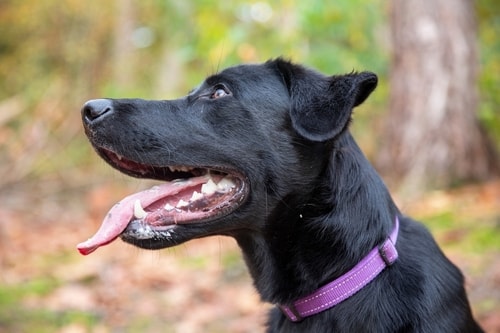
Shepradors are celebrated for their well-balanced temperament, making them an excellent choice for many dog owners. Combining qualities from both the German Shepherd and the Labrador Retriever, they are known for their intelligence, loyalty, and affectionate nature. Shepradors make excellent family pets, companions, and working dogs.
Friendly and Sociable
Shepradors are exceptionally friendly and sociable dogs. They thrive on human interaction and form strong bonds with their families. Their gentle disposition makes them particularly good with children, as they are known to be patient and tolerant. This makes them an ideal choice for households with young kids. Their sociability extends to other pets as well, often getting along well with other dogs and animals in the household.
Intelligent and Trainable
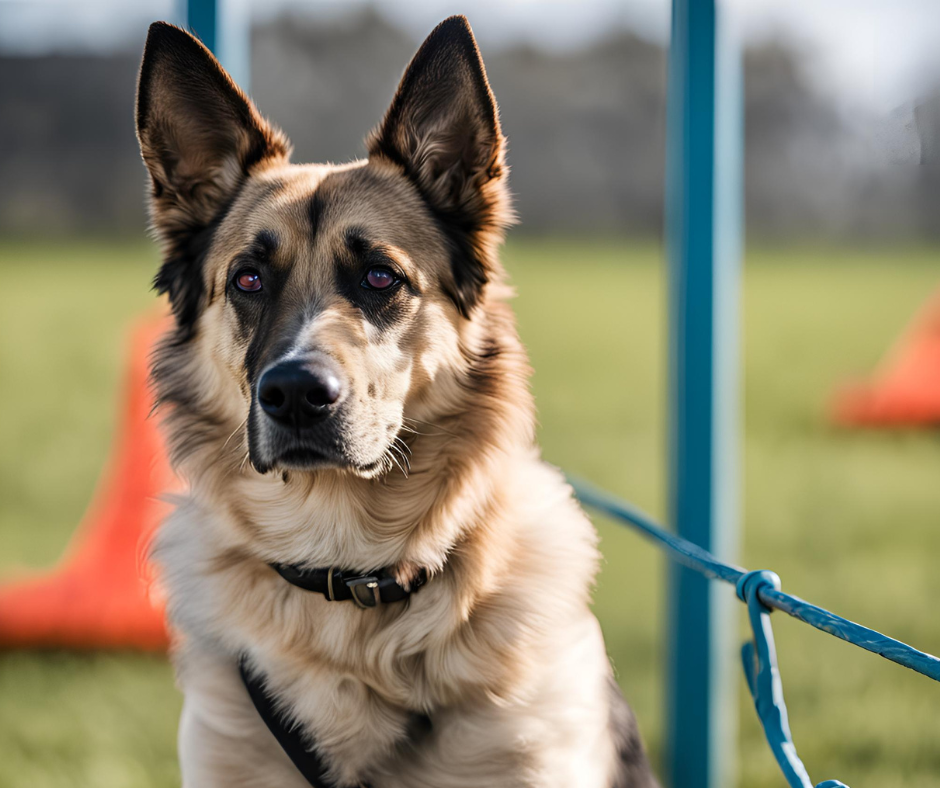
Both the German Shepherd and Labrador Retriever are renowned for their intelligence and eagerness to please, traits that the Sheprador inherits fully. This makes them highly trainable and responsive to obedience training. They excel in various roles, including service and therapy work, due to their quick learning ability and willingness to follow commands. Shepradors are known to excel in obedience classes, agility training, and even advanced tricks.
Protective and Loyal
Shepradors are known for their protective instincts, inherited from the German Shepherd. They are naturally alert and make excellent watchdogs, often barking to alert their owners of any unusual activity. Their loyalty to their families is profound, and they will go to great lengths to protect their loved ones. This makes them not only great companions but also reliable protectors of the home.
Energetic and Playful

While they have a calm side, Shepradors also possess a playful and energetic nature. They enjoy outdoor activities such as hiking, running, and playing fetch. Regular exercise is essential to keep them healthy and happy, preventing boredom and associated behavioral issues. Their playful nature makes them great companions for children and active adults. They are also known to enjoy swimming, which can be a fun and excellent way for them to get exercise.
Affectionate and Gentle
Shepradors are affectionate dogs that enjoy spending time with their families. They are known to be gentle giants, often seeking out their owners for cuddles and companionship. Their affectionate nature means they often enjoy sitting by their owner’s side, providing comfort and emotional support. They are known to be particularly good at sensing their owner’s mood and providing the appropriate level of comfort.
Socialization Needs
Early socialization is crucial for a German Sheprador puppy to ensure they grow up to be well-rounded and confident. Exposure to different environments, people, and other animals during puppyhood helps them develop into friendly and adaptable adults. Socialization helps mitigate any shyness or overprotectiveness, ensuring they are comfortable in various situations.
5. Health and Lifespan
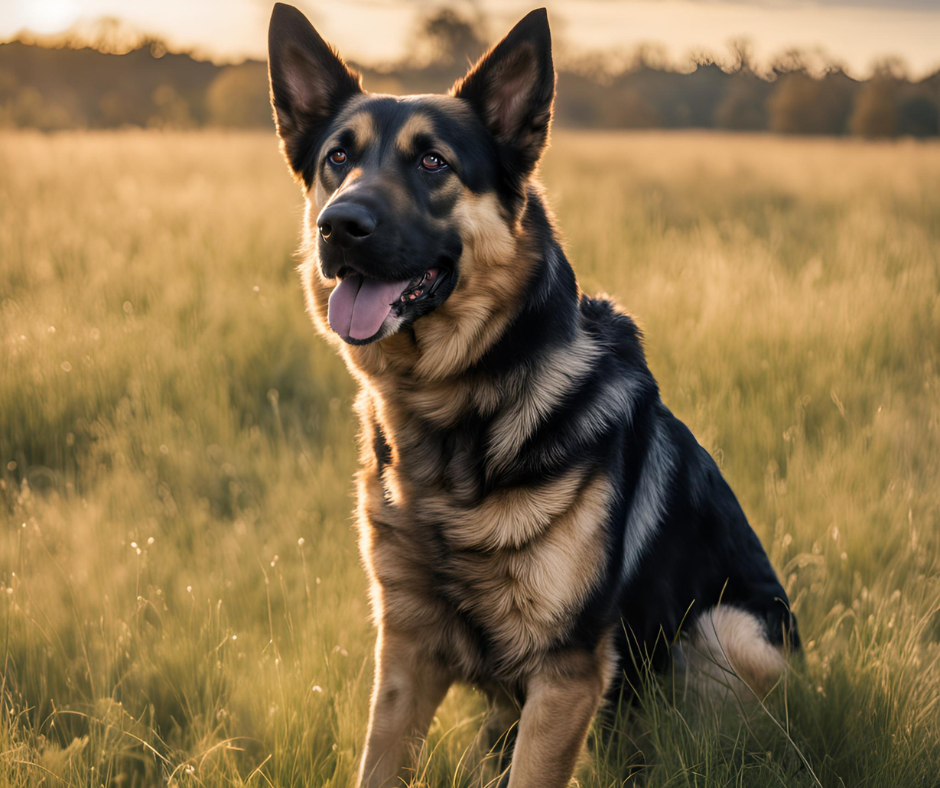
Shepradors are generally healthy dogs, benefiting from the robust genetics of both the German Shepherd and Labrador Retriever. However, like all breeds, they are prone to certain health conditions that prospective owners should be aware of. A well-cared-for Sheprador typically has a lifespan of 10 to 14 years.
Common Health Issues:
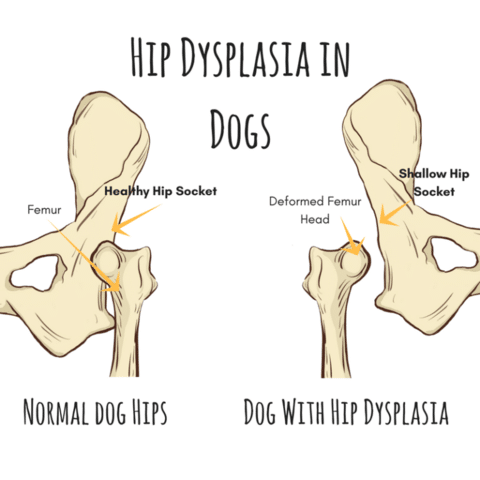
Hip and Elbow Dysplasia: This is a common issue in larger breeds, including Shepradors. It involves the abnormal formation of the hip or elbow joints, which can lead to arthritis or lameness. Regular check-ups and maintaining a healthy weight can help manage and prevent this condition.
Bloat (Gastric Dilatation-Volvulus): This life-threatening condition can affect deep-chested breeds like the Sheprador. It involves the stomach twisting and filling with gas. Immediate veterinary attention is required if symptoms like excessive drooling, a distended abdomen, or unproductive vomiting are observed.
Allergies: Shepradors can be prone to skin and food allergies, which may cause itching, rashes, and gastrointestinal issues. Identifying and avoiding allergens, along with appropriate treatment, can help manage these conditions.
Ear Infections: Due to their floppy ears, Shepradors can be prone to ear infections. Regular ear cleaning and monitoring for signs of infection, such as redness, odor, or excessive scratching, are important.
Eye Problems: Conditions such as cataracts and progressive retinal atrophy (PRA) can occur in Shepradors. Regular eye exams are recommended to monitor and treat any emerging eye conditions.
Heart Diseases: Conditions like cardiomyopathy and heart valve problems can occur in this breed. Regular veterinary check-ups can help catch these issues early.
Care and Prevention
Proper care is essential to minimize the risk of these health issues:
Regular Exercise: Keeping your Sheprador active helps manage their weight, reducing the stress on their joints and lowering the risk of heart disease. Aim for at least an hour of vigorous exercise daily.
Balanced Diet: A nutritious, balanced diet tailored to their age, size, and activity level is crucial for maintaining overall health. Portion control is important to prevent obesity.
Routine Veterinary Visits: Regular vet check-ups can catch health issues before they become severe. This includes vaccinations, parasite prevention, and health screenings.
Dental Care: Regular brushing of teeth helps prevent dental diseases, which can impact their overall health. Dental chews and professional cleanings can also be beneficial.
Mental Stimulation: Providing mental stimulation through training, puzzle toys, and interactive games can help keep your Sheprador mentally healthy and prevent boredom-related behaviors.
6. Training and Exercise Needs
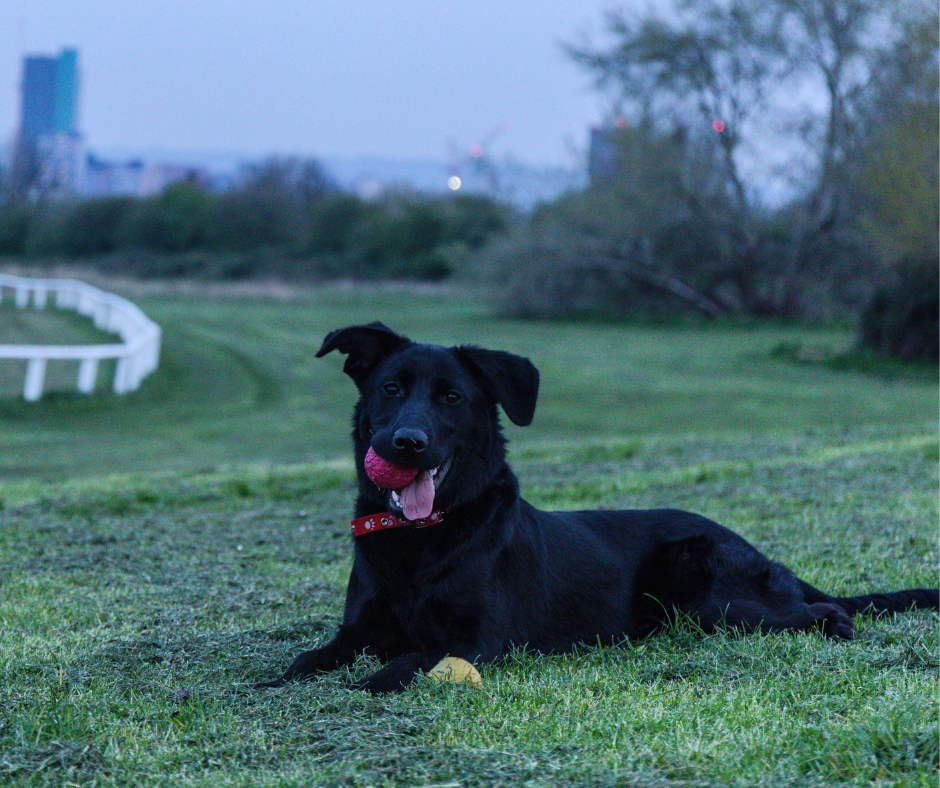
Shepradors are not only intelligent but also highly eager to please, making them relatively easy to train. Their training and exercise needs should be met to ensure they remain happy, healthy, and well-behaved.
Training:
-
Early Socialization: Exposing your Sheprador to a variety of people, places, and situations early on can help them develop into a well-rounded dog. Puppy socialization classes are a great start.
-
Obedience Training: Basic commands like sit, stay, come, and heel are easily grasped by Shepradors due to their keen intelligence. Positive reinforcement techniques, such as treats, praise, and play, work best.
-
Advanced Training: Given their aptitude, many Shepradors excel in advanced training, including agility, advanced obedience, and even specialized roles like therapy and service dog training. Consistency and patience are key in training sessions.
-
Behavioral Training: Addressing any behavioral issues early on, such as excessive barking or chewing, is important. Using positive reinforcement and redirection can help correct unwanted behaviors.
Read More: Dog Training 101
Exercise Needs:
-
Physical Activity: Shepradors require regular physical exercise to keep them healthy and prevent boredom. They thrive on activities like long walks, jogging, hiking, and playing fetch. Aim for at least an hour of vigorous exercise daily.
-
Mental Stimulation: Providing mental stimulation is equally important. Puzzle toys, hide-and-seek games, and learning new tricks can keep their mind active and engaged. Interactive toys and games that challenge their problem-solving skills are beneficial.
-
Outdoor Activities: Shepradors enjoy outdoor activities and often have a natural affinity for water, making swimming an excellent form of exercise. They also enjoy exploring new environments, so varied walking routes and outdoor adventures can be very stimulating.
Behavioral Considerations:
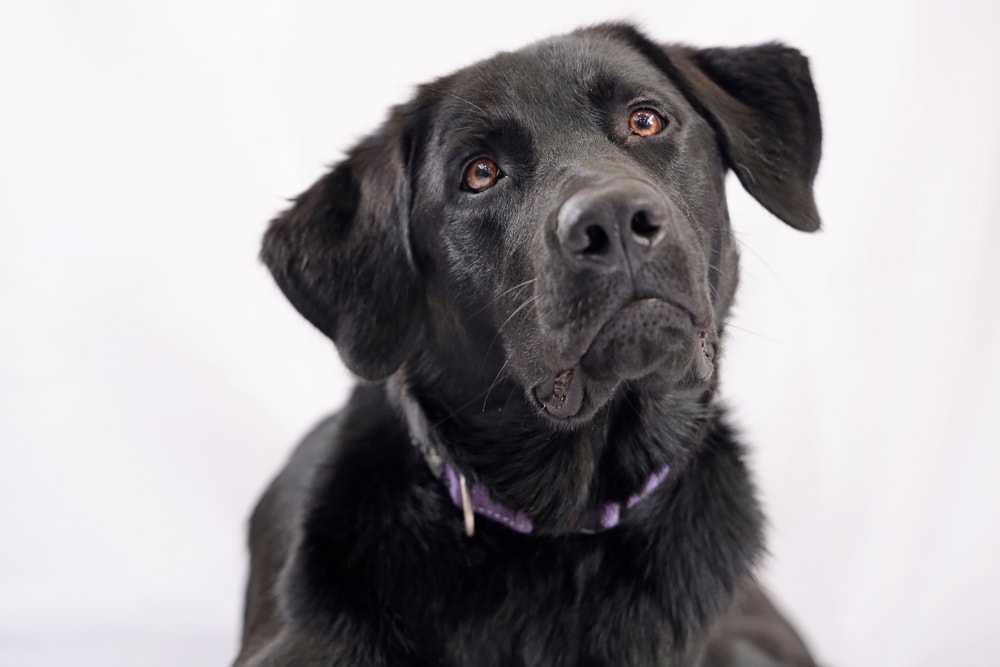
-
Boredom Prevention: Shepradors can become bored and potentially destructive if not given enough exercise and mental stimulation. Ensuring they have enough activities to keep them occupied is crucial.
-
Positive Reinforcement: Using positive reinforcement techniques during training helps build a strong bond between the dog and owner, encouraging good behavior and learning.
Routine and Consistency:
-
Establish a Routine: Establishing a daily routine for exercise, feeding, and training can help provide structure and stability for your Sheprador. Dogs thrive on consistency and knowing what to expect each day.
-
Bonding Time: Spending quality time with your Sheprador through play, training, and affection strengthens your bond and contributes to their overall well-being.
7. Suitability as Family Pets
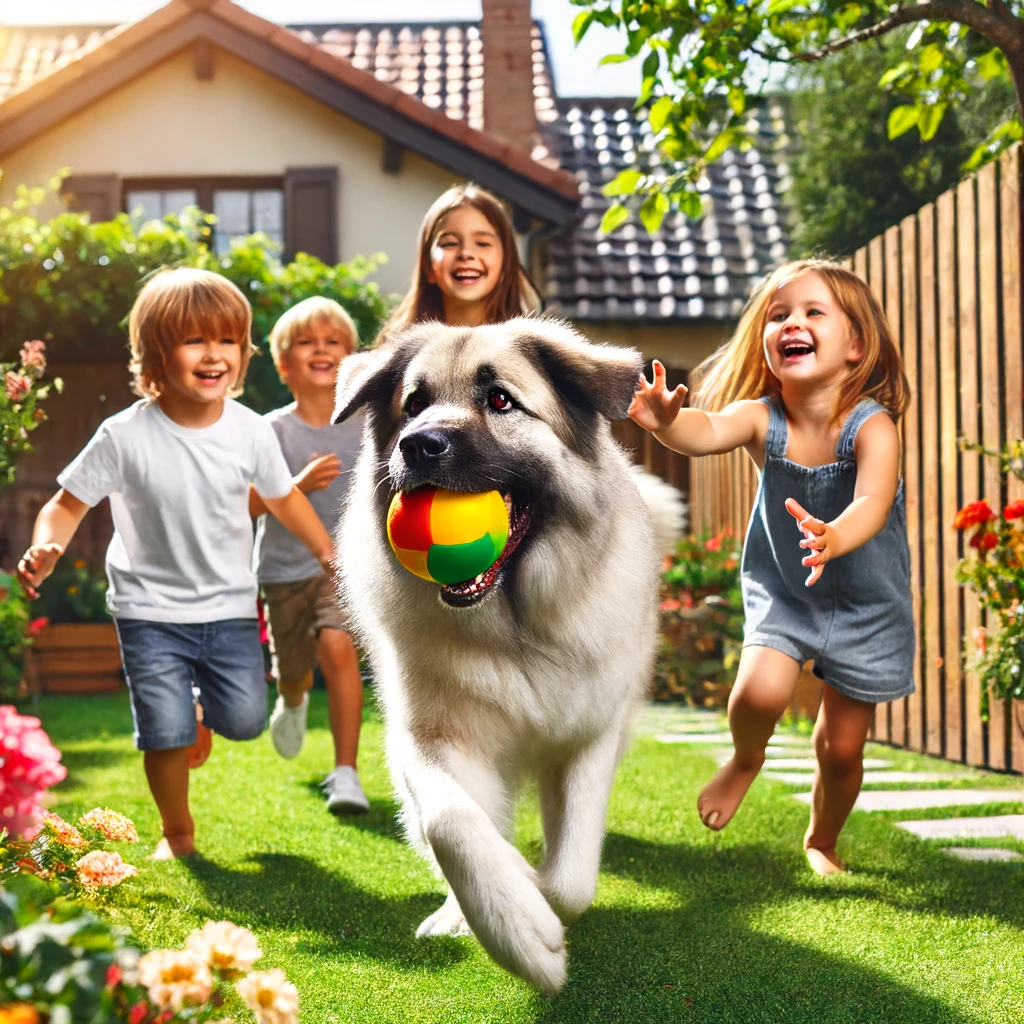
Shepradors are widely recognized for their suitability as family pets, thanks to their friendly, loyal, and adaptable nature. They thrive in family environments where they can be active participants in daily activities and form strong bonds with all family members.
Interaction with Children
Shepradors are known for their gentle and patient demeanor, making them excellent companions for children. They are tolerant of the energetic and sometimes unpredictable nature of kids. Their large size and sturdy build mean they can handle rough-and-tumble play without getting easily hurt. However, as with any breed, it is important to supervise interactions between dogs and young children to ensure safety for both parties. Teaching children how to properly interact with and respect dogs is also crucial.
Compatibility with Other Pets
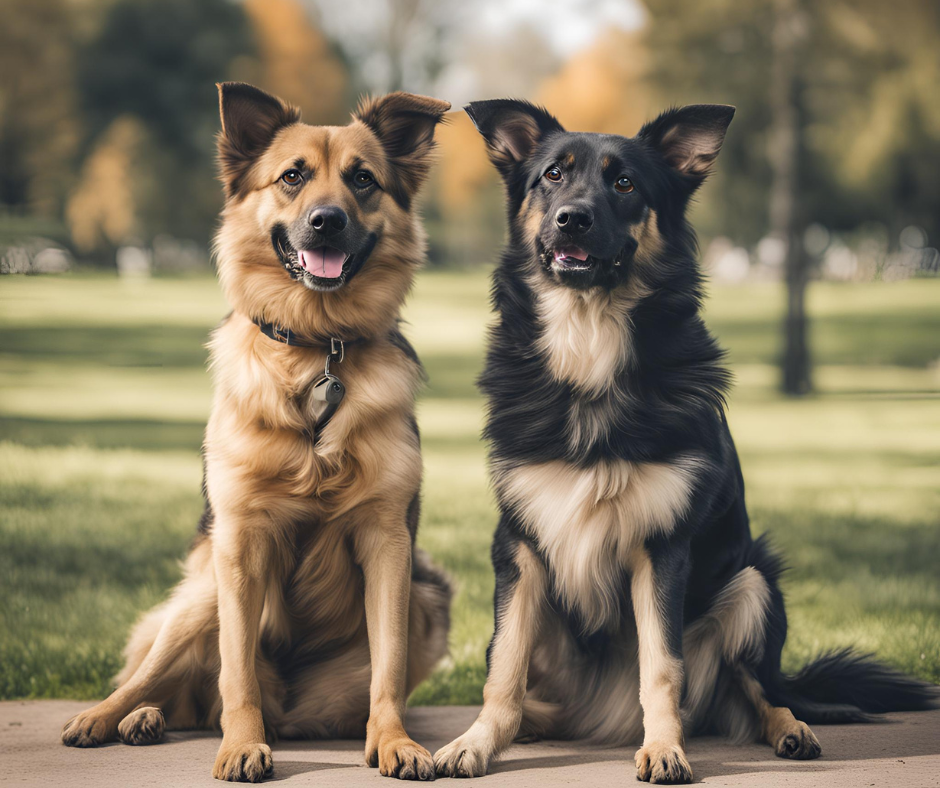
Shepradors generally get along well with other pets, including other dogs and cats, making them a friendly shepherd mix. Their friendly and sociable nature makes them adaptable to multi-pet households. Early socialization is key to ensuring they develop positive relationships with other animals. Introducing a Sheprador to other pets gradually and in a controlled manner helps build a harmonious environment. Their playful nature can make them great companions for other dogs, and their gentle demeanor typically allows them to coexist
Adaptability to Different Living Situations

While Shepradors are adaptable, they do best in homes with enough space to accommodate their size and exercise needs. They can adapt to apartment living if given sufficient exercise and mental stimulation, but they thrive in homes with large yards or access to outdoor spaces. Their versatile nature allows them to adjust to various living situations as long as their physical and emotional needs are met. Urban environments can be suitable if the dog receives regular outings and stimulation, while rural settings can provide ample space for exploration and exercise.
Emotional Support and Companionship
Shepradors excel in providing emotional support and companionship. Their affectionate nature means they often seek out their owners for cuddles and companionship. They are sensitive to their owners’ emotions and can offer comfort during stressful times. This makes them ideal pets for individuals or families seeking a loyal and loving companion. Their protective instincts also provide a sense of security, making them excellent watchdogs while still being loving family members.
Training and Activity Needs
The active and intelligent nature of the Sheprador means they require regular physical and mental stimulation. Families who enjoy outdoor activities such as hiking, running, or playing fetch will find a perfect partner in a Sheprador. Their eagerness to please and high trainability also make them suitable for families willing to invest time in training and interactive play. Engaging in activities such as agility training, obedience classes, and even participating in dog sports can keep them mentally stimulated and physically fit.
8. Role as Working Dogs

Shepradors have established a reputation for excelling in various working roles, thanks to their intelligence, trainability, and versatile nature. Their ability to adapt and perform different tasks makes them valuable in numerous working capacities.
Service and Assistance Dogs: Shepradors are commonly trained as service and assistance dogs. Their calm demeanor, combined with their intelligence and trainability, makes them ideal for helping individuals with disabilities. They can be trained to perform tasks such as guiding the visually impaired, assisting with mobility issues, retrieving items, and providing emotional support. Their gentle and patient nature also makes them excellent therapy dogs, offering comfort and companionship to those in hospitals, nursing homes, and other care facilities. They can be trained to detect changes in their owner’s health, such as low blood sugar or impending seizures, providing life-saving assistance.
Search and Rescue (SAR) Roles: The physical robustness and keen sense of smell of the Sheprador make them excellent candidates for search and rescue operations. They are often used in wilderness search and rescue missions, disaster response, and locating missing persons. Their endurance and ability to work in challenging conditions are highly valued in SAR roles. Shepradors can be trained to track scents over long distances and through difficult terrain, making them invaluable assets in emergency situations.
Law Enforcement and Detection Work: Shepradors are also well-suited for roles in law enforcement. Their strong sense of smell and trainability make them effective detection dogs, capable of identifying drugs, explosives, and other contraband. They can also be trained for tracking and apprehension work, assisting police and military personnel in various operations. Their loyalty and protective nature make them reliable partners in high-stress environments. Shepradors can be trained to perform patrol duties, search buildings, and assist in crowd control, demonstrating their versatility and reliability in law enforcement.
Therapy and Emotional Support Roles: Shepradors excel in therapy and emotional support roles due to their gentle and affectionate nature. They provide comfort and companionship to individuals in schools, hospitals, and therapy centers. Their presence can have a calming effect, reducing stress and anxiety in various settings. They are particularly effective in helping individuals with mental health conditions, providing consistent emotional support. Shepradors can be trained to visit nursing homes, hospitals, and schools, bringing joy and comfort to those in need.
Agricultural and Farm Work: Due to their strong work ethic and physical strength, Shepradors can also be valuable on farms. They can assist with herding livestock, guarding property, and performing other farm-related tasks. Their versatility and ability to learn new tasks make them suitable for various roles in agricultural settings. Shepradors can be trained to help with tasks such as fetching tools, moving livestock, and providing security for the farm, showcasing their adaptability and usefulness in rural environments.
9. Care and Maintenance
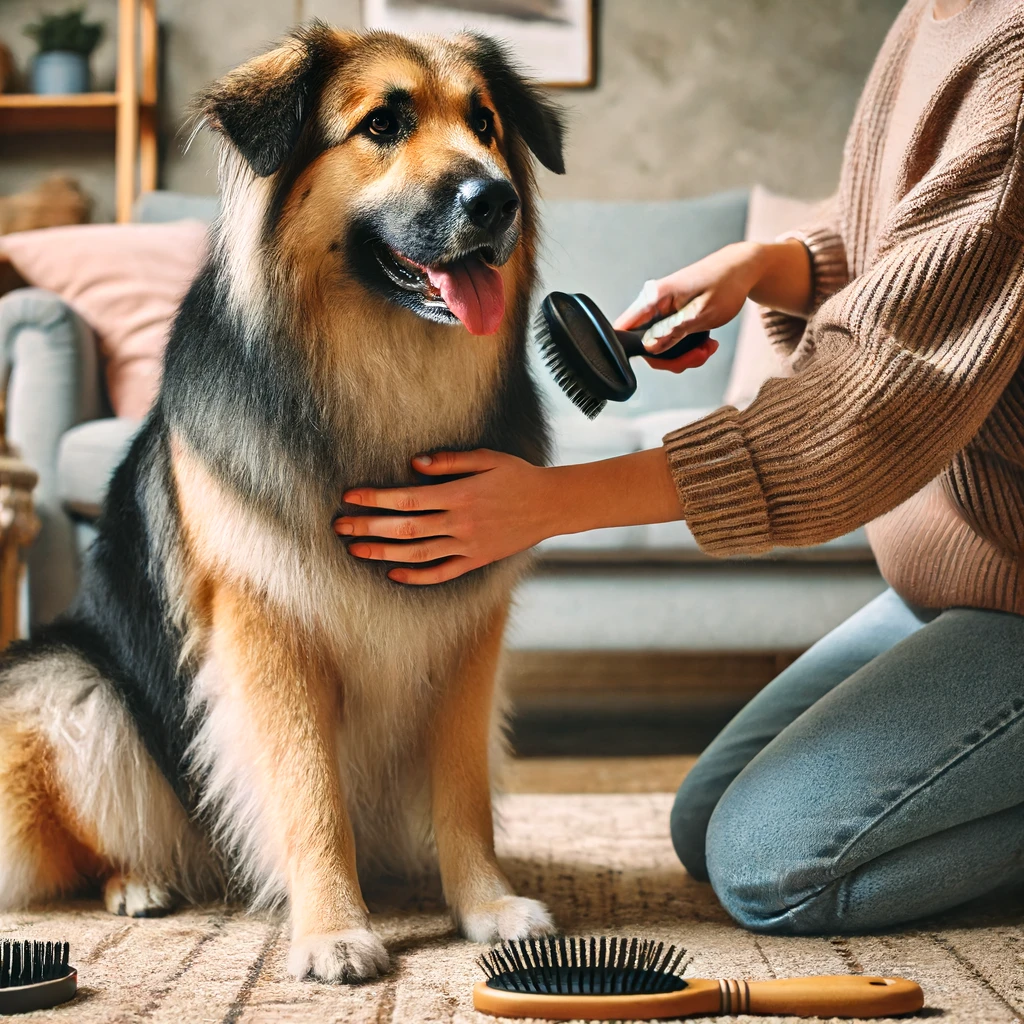
Maintaining the health and happiness of a Sheprador requires a commitment to regular care, which includes grooming, dietary management, and overall wellness routines. Their robust nature and active lifestyle mean that they benefit greatly from structured care practices.
Grooming Needs: Shepradors have coats that can vary, but they generally require regular grooming to keep them looking their best and to maintain their health.
-
Brushing: Regular brushing is essential to manage shedding and keep the coat free of tangles and mats. For Shepradors with a double coat, more frequent brushing (several times a week) is recommended, especially during shedding seasons in spring and fall.
-
Bathing: Bathe your Sheprador as needed, typically every two to three months, or whenever they get particularly dirty. Use a gentle, dog-specific shampoo to avoid drying out their skin and to maintain the natural oils in their coat.
-
Ear Cleaning: Regularly check and clean your Sheprador’s ears to prevent infections, especially if they have floppy ears. Look for signs of redness, odor, or excessive wax buildup, and use a vet-approved ear cleaner to keep their ears healthy.
-
Nail Trimming: Trim your dog’s nails every 3-4 weeks or as needed to prevent overgrowth and splitting. If you can hear their nails clicking on the floor, it’s time for a trim. Regular nail trimming helps maintain good foot structure and prevents discomfort.
-
Dental Care: Brush your dog’s teeth several times a week to prevent tartar buildup and dental diseases. Dental chews and regular vet dental check-ups also help maintain oral health. Good dental hygiene can prevent issues like gum disease and tooth decay, which can affect overall health.
Dietary Considerations: Feeding your Sheprador a balanced diet is crucial for their overall health:

-
High-Quality Dog Food: Choose a high-quality dog food that meets the nutritional standards set by the Association of American Feed Control Officials (AAFCO). Look for foods that list meat as the first ingredient and avoid those with excessive fillers. A balanced diet supports their energy levels and maintains their muscle mass.
-
Portion Control: Monitor your dog’s weight and adjust food portions to maintain a healthy weight. Obesity can exacerbate joint issues and other health problems. Follow feeding guidelines based on their age, weight, and activity level, but be ready to adjust based on your dog’s specific needs.
-
Feeding Schedule: Divide their daily food intake into two meals to prevent bloat, a condition to which deep-chested breeds like the Sheprador are prone. Regular feeding times can help with digestion and prevent overeating.
-
Fresh Water: Ensure your Sheprador has access to fresh water at all times, especially during and after exercise. Hydration is crucial for maintaining their health and aiding in digestion.
Health Monitoring: Regular veterinary visits are essential for maintaining the health of your Sheprador:
-
Routine Check-ups: Schedule annual or bi-annual check-ups to monitor your dog’s overall health and catch any potential issues early. Regular visits allow your vet to track your dog’s health trends and catch problems before they become serious.
-
Vaccinations: Keep up with your dog’s vaccination schedule to protect them from common diseases. Vaccinations are a key part of preventive healthcare and help protect against various infectious diseases.
-
Parasite Prevention: Use preventive treatments for fleas, ticks, and heartworms as recommended by your veterinarian. Parasite prevention is crucial for preventing a range of health issues and maintaining overall well-being.
-
Health Screenings: Regularly screen for common health issues in Shepradors, such as hip dysplasia, elbow dysplasia, and heart conditions. Early detection and management of these conditions can improve your dog’s quality of life and longevity.
10. Adoption and Buying Advice

When considering adding a Sheprador to your family, it is important to decide whether to adopt from a rescue or purchase from a reputable breeder. Each option has its own merits and considerations.
Adopting a Sheprador: Adopting a Sheprador can be a rewarding experience, providing a home to a dog in need. Many rescues and shelters have Shepradors or similar mixes available for adoption. Adoption has several benefits:
-
Cost-Effective: Adopting a dog usually costs less than purchasing from a breeder and often includes vaccinations, microchipping, and spaying or neutering. Adoption fees typically cover these initial veterinary expenses.
-
Saving a Life: By adopting, you provide a second chance to a dog in need, helping reduce the number of homeless pets. You are also helping to alleviate the strain on shelters and rescues.
-
Adult Dogs: Many dogs available for adoption are adults, which means their temperament and health are already established, making it easier to find a good match for your household. Adult dogs may also be past the challenging puppy stage and can adapt more quickly to new homes.

Buying from a Breeder: If you prefer a puppy and want to raise and train it from a young age, purchasing a Sheprador from a reputable breeder might be the best option. Here are some tips for finding a responsible breeder:
-
Research: Conduct thorough research to identify breeders who have a good reputation and prioritize the health and temperament of their dogs. Look for breeders who are transparent about their breeding practices and welcome questions. A good breeder will be knowledgeable and passionate about the breed.
-
Health Screenings: Ensure the breeder conducts necessary health screenings on their breeding dogs to avoid common hereditary health issues. They should provide health clearances for both parent breeds, including tests for hip and elbow dysplasia, eye conditions, and heart diseases.
-
Visiting the Breeder: Visit the breeder’s facility to see how the puppies are raised and to meet the parent dogs. This helps you gauge the environment and the dogs’ temperament. A responsible breeder will maintain clean and healthy living conditions for their dogs.
-
Ask Questions: A reputable breeder will ask you questions about your lifestyle and experience to ensure their puppies go to suitable homes. They should also provide support and guidance after you take your puppy home. Expect to answer questions about your home, family, and plans for the dog.
What to Look for in a Sheprador Puppy or Adult:
-
Health: Look for signs of good health, such as clear eyes, a shiny coat, and good energy levels. Avoid puppies or adults that appear lethargic or have visible health issues. A healthy puppy should be active and curious.
-
Temperament: Choose a puppy or adult with a temperament that matches your family’s lifestyle. Shepradors should be friendly, confident, and sociable. Observe interactions with people and other animals to gauge their temperament.
-
Documentation: Ensure you receive all necessary documentation, including vaccination records, health clearances, and, if applicable, pedigree information. Proper documentation helps ensure you are getting a healthy and well-bred dog.
11. Conclusion
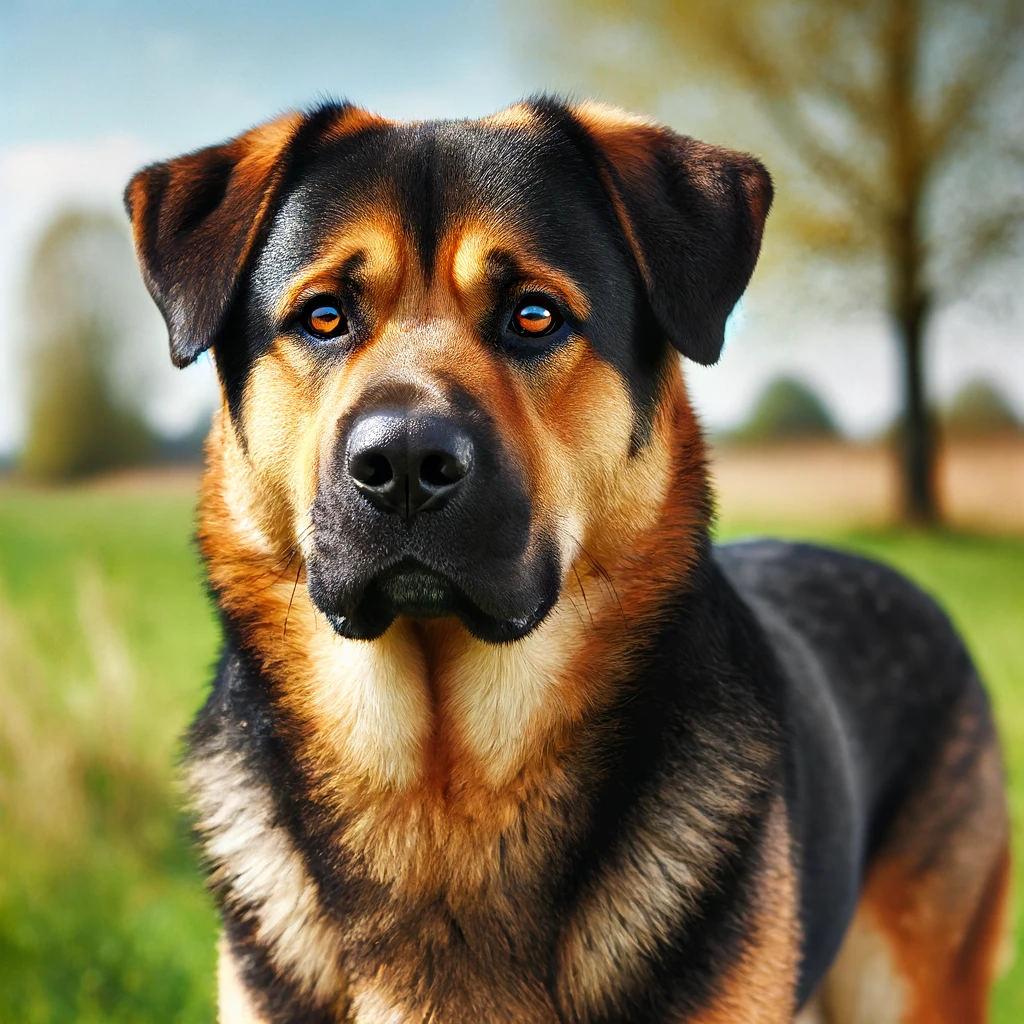
The German Sheprador is a versatile and well-rounded breed that excels in various roles, from family pet to working dog. Their friendly and intelligent nature, combined with their loyalty and protective instincts, makes them a beloved companion for many dog lovers. Whether playing in the yard, accompanying on outdoor adventures, or providing assistance in professional roles, the Sheprador brings joy and dedication to their families and handlers.
Summary of Key Points:
-
Temperament: Shepradors are friendly, intelligent, and loyal, making them excellent companions for families and individuals alike.
-
Versatility: They excel in various roles, including service, therapy, search and rescue, and detection work, thanks to their trainability and keen sense of smell.
-
Health and Care: Regular veterinary visits, a balanced diet, and proper grooming are essential for maintaining their health and happiness.
-
Training and Exercise: They require regular physical and mental stimulation to stay healthy and well-behaved. Early socialization and consistent training are key to their development.
-
Adoption and Purchasing: Whether adopting from a rescue or purchasing from a breeder, it’s important to choose a reputable source to ensure the health and temperament of your Sheprador.
Encouragement for Responsible Pet Ownership: Owning a Sheprador comes with responsibilities that should not be taken lightly. Providing a loving and structured environment, meeting their exercise and mental stimulation needs, and ensuring regular health check-ups are crucial for a fulfilling and rewarding relationship with your Sheprador. By committing to responsible pet ownership, you can enjoy many happy years with this loyal and affectionate breed.
Resources and Community: For additional support and information, consider joining Sheprador-specific communities and online forums. These platforms offer valuable advice, share experiences, and provide recommendations for addressing breed-specific issues. Engaging with other Sheprador owners can enhance your understanding of the


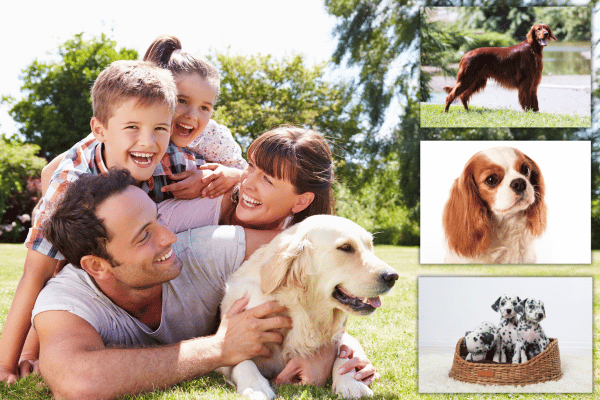
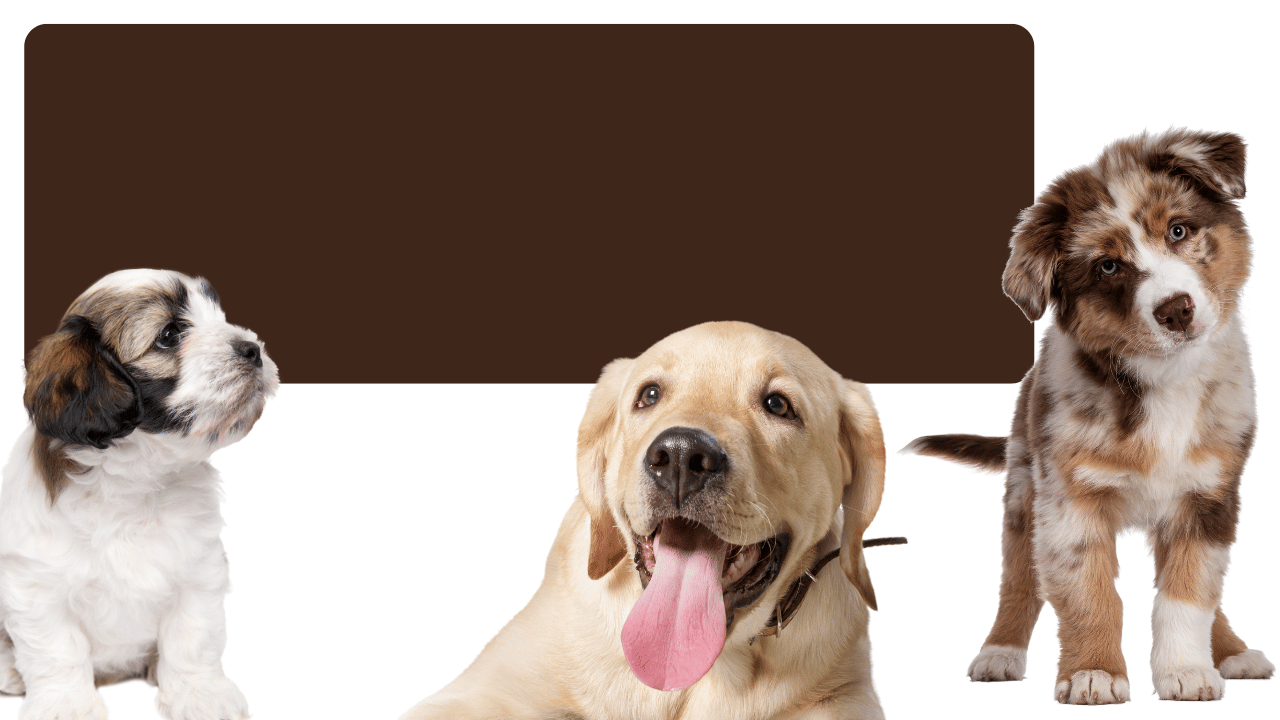

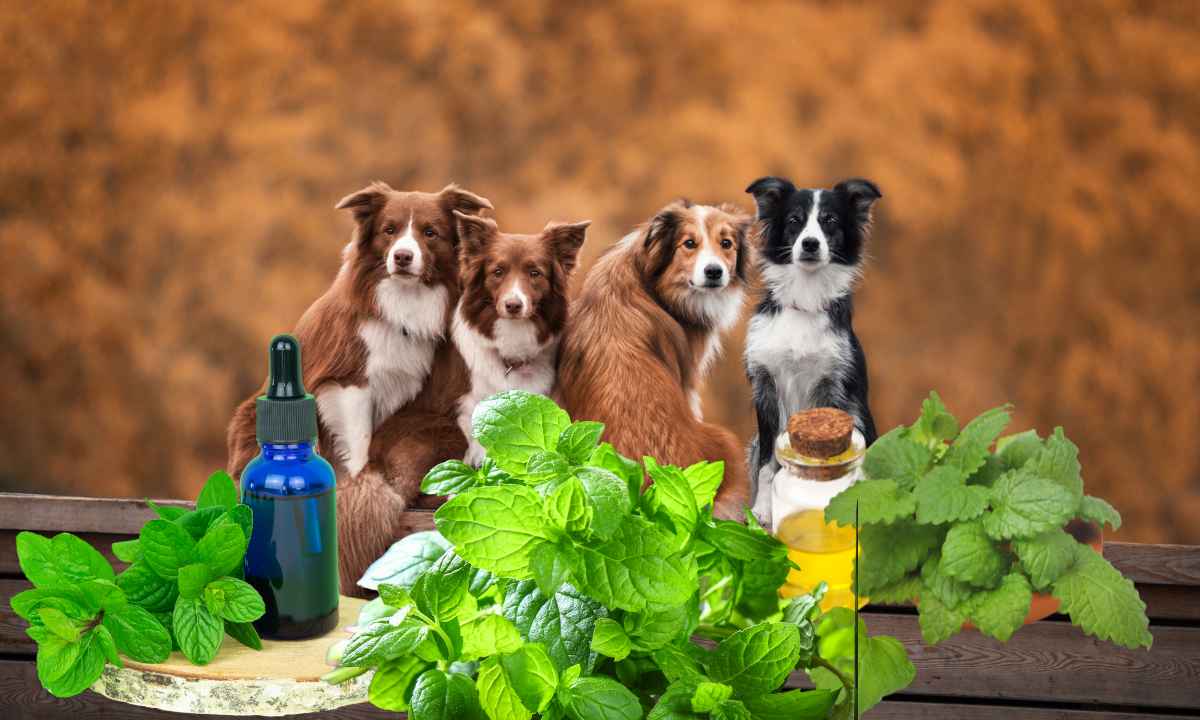

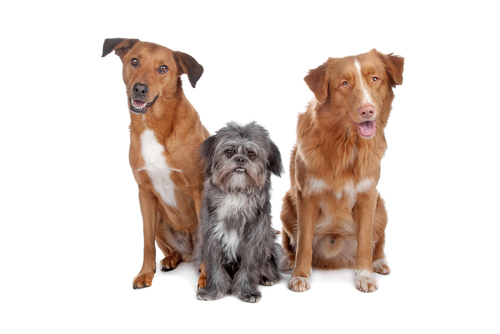
Get involved!
Comments